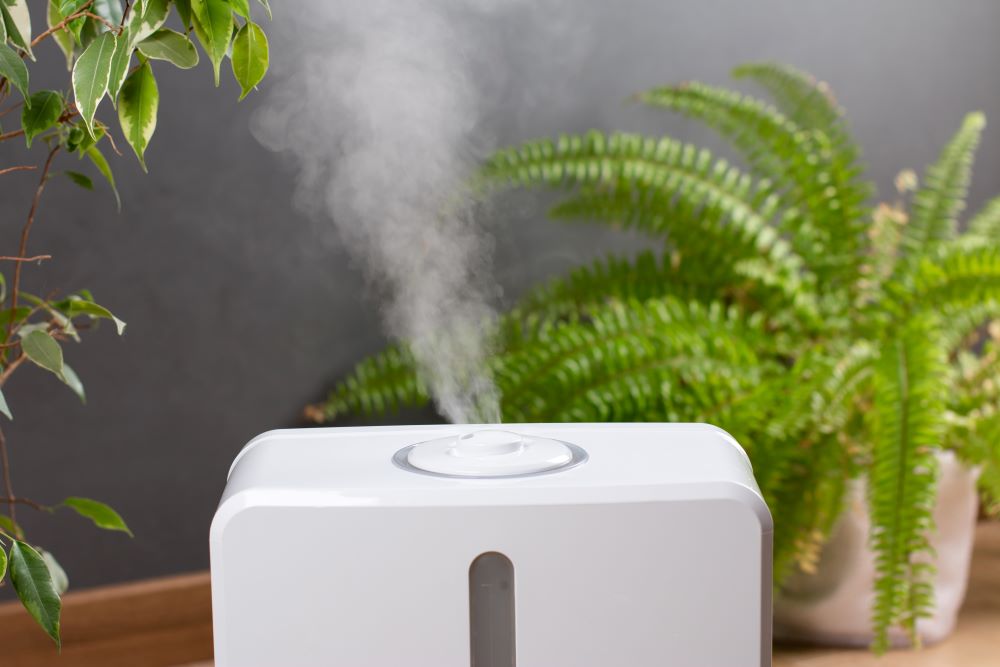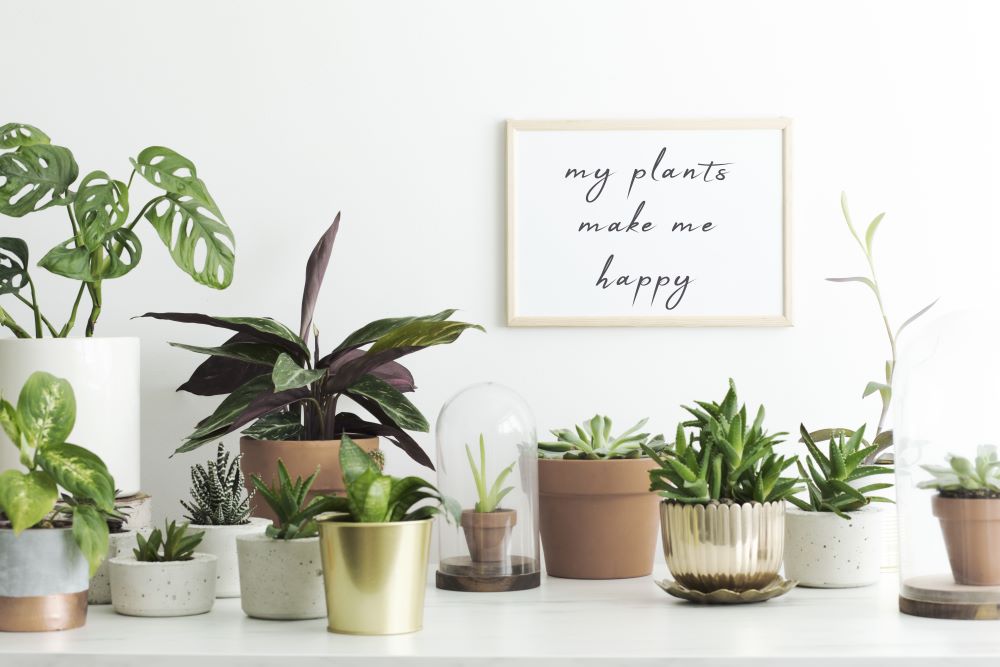7 Healthy Houseplant Tips For Indoor Gardening
Incorporating plants into your home can be a nice way to add some beautiful colors into almost any room. While some houseplants are easier to care for than others, it’s important to learn how to stay on top of maintenance to keep your plants healthy and strong. Taking the time to properly care for your plants will help you keep them growing without too many complications. From watering tips to sunlight to plant choice and more, here are 7 healthy houseplant tips for indoor gardening.
1. Give Your Houseplants The Correct Amount Of Sunlight

Sunlight is important for plants, especially for houseplants. This is because each room in your house gets a different amount of sunlight, so it’s best that you’re strategic when choosing the location for your houseplants. Make sure to understand the amount of sunlight that’s needed for each specific type of houseplant you get in order to take care of them properly.
Various types of plants will need different amounts of sunlight per day, along with different types of lighting. Before you choose where to keep your plants, it’s best to determine the type of sunlight it needs. Here are a few of the common sunlight needs that you’ll see with houseplants:
- Direct/Bright Sunlight. Plants that require direct or bright light need to be in an area that receives about five to six hours of sunlight per day, sometimes more. The windowsill is the best choice for these types of plants; however, make sure to check them often as they may dry out frequently.
- Indirect Sunlight. If your plant needs indirect light, you’ll want to make sure that it doesn’t get scorched from the sun but still receives its rays. You can easily do this by placing the plant more towards the center of room and using a sheer curtain as protection.
- Low Light. For plants that need a low amount of sunlight, you can place them in rooms that are significantly darker during the day or rooms with shaded windows. It’s important that these plants don’t get any direct sunlight because they won’t survive.
2. Water Your Houseplants Frequently

The right watering schedule is crucial to your houseplant’s survival and quality of life, alongside these other houseplant tips. Keep in mind that not all plants will require the same amount of water, so make sure to learn the care tips for the specific plants that you choose. Generally speaking, a major rule of thumb is to not overwater your plants because that will cause root rotting and a variety of other issues.
Plants will dry out at different rates, depending on a number of factors. Some plants may be in direct sunlight more than others, some may be exposed to higher temperatures, and some may be in different sized pots. While it’s hard to have the same watering routine every single day, an easy way to check if a plant needs water is to place your finger into the soil. If it’s dry about an inch in, you’ll know it’s time to water it.
When watering your plants, make sure to not add too much water. Water them slowly until you see the water coming out of the drainage holes. Keep your pot on top of a saucer and check the saucer about 30 minutes after watering. Empty the extra water out and clean the saucer to keep it fresh. It’s important to not let the extra water linger on the saucer because that can cause mold and harm the plant. Stay on top of this to keep your houseplants healthy.
3. Don’t Expose Houseplants To Cold Drafts Or Direct Heat

Houseplants not only need the correct amount of sunlight and water, but they also need to be stationed in areas of your home with a steady temperature. Depending on the type of plants you bring into your home, they may need a warmer or cooler environment. Pay attention to the specific needs of your plants to determine the best placement for them to live in your home.
Typically, you’ll want to keep your houseplants away from any cold drafts or any direct heat. Some plants might get more heat if they need direct sunlight, but generally you should keep plants away from direct sources of heat such as heating vents. The same goes for direct sources of cold drafts or wind. You’ll want to keep plants away from air conditioner vents, along with keeping them away from doors and windows that get opened frequently.
The best way to pick the placement of your plants is to do a walk-through of your home. Take notes of where your vents are, how much sunlight each room gets during the day, the breeze of the air conditioner in each room, and which doors and windows are used the most. Planning the locations out beforehand will help you have healthy and thriving houseplants.
4. Keep A Humidifier Nearby For Healthy Houseplants

If the air in your home is dry, it can sometimes become a challenge for houseplants. Although certain plants thrive in dry environments, such as cacti and succulents, most houseplants need a sufficient amount of moisture to continue growing. While you can regularly spray your plants with a misting of water to keep the leaves nourished, you can also use a humidifier for easier maintenance.
Place a small humidifier near your houseplants give them added moisture. A humidifier is an especially smart option for houseplants that are newly growing because the additional moisture will help them grow at a significant rate. You can also use a larger humidifier in a central area of your home to increase the overall moisture throughout your entire house.
Keep in mind that certain types of plants need larger amounts of moisture. For instance, plants from tropical regions will need the ultimate amount of moisture and will require more maintenance if you want to keep them inside your home. Other plants will be negatively affected and potentially damaged from excess moisture, so make sure to double check on the specific needs of each of your houseplants before setting up a humidifier.
5. Use The Right Planters For Your Houseplants

While you probably want to place your houseplants in pretty containers, it’s important to first consider other important factors. Choosing a pot or planter for your houseplant can make or break the growth process. There are many things to think about when choosing the container, and it may vary depending on the type of plant. However, here are some of the main things to keep in mind:
Choose Houseplant Containers With Drainage
Choose a pot with proper drainage holes. This is crucial because you want to water to drain out to prevent the roots from rotting and to prevent the soil from getting too moist. It also helps the plant roots breathe better, making for a healthier environment. If you happen to find a pot or container that doesn’t have drainage holes, you can also drill your own. Just make sure the holes are big enough for water to drain through, but small enough to keep the soil inside.
Pick Your Planter Material Carefully
Houseplant containers come in all different materials, so it’s good to understand the various types to figure out which ones are best for your plants. These are some of the main types:
- Terra Cotta: These pots are great for succulents and any plants that need minimal moisture, thanks to their ability to dry out quickly.
- Plastic: Perfect for a wide variety of houseplants, plastic pots and containers hold in moisture well and they’re very lightweight.
- Ceramic: Ceramic pots are beautiful and decorative, and they’re best for tropical plants or any houseplants that require more moisture.
Have Fun With The Pot & Planter Style
Of course, you also want to choose pots, containers, and planters that match your decor style or personal style. Once you’ve determined which materials will work best for your plants, you can have fun choosing the colors and patterns. This is simply based on your personal taste; however, you can also coordinate with the colors of your plants, or the colors of your surrounding decorations.
6. Repot Your Houseplants To Give Them Fresh Soil

Another important care step for your houseplants is to repot them when needed. Repotting doesn’t always mean moving them to a new planter (although you can), but rather, it usually means changing out their soil. You should regularly repot your plants after about 12 months; however, there are also a variety of other reasons to repot:
- The plant is growing too slowly
- Roots are pushing out of the drainage holes
- The plant is too heavy on top, causing droopy leaves
- The roots are pushing up on the plant, causing it to go out of the planter
If you notice any of these signs or any other potential issues, go ahead and repot your plants as soon as possible. Luckily, it doesn’t take much time or complications to repot your houseplants. Check out the easy steps below!
How To Repot Your Houseplants In 5 Steps
- Start by gently removing your plant from its pot. You can do this by turning it sideways and carefully pulling on the stems.
- Once you get the plant out, gently loosen the roots to assure that they’ll have enough space. You can also prune off roots that are too long – just make sure to not trim off thick roots.
- Next, remove about one-third of your old soil, or you can remove it all to start from scratch.
- Pour in your new soil and gently push it down to prevent air pockets from forming.
- Finally, center your plant into the new soil.
7. Choose Houseplants That Will Thrive The Best

You can use these healthy houseplant tips for almost any type of plant that you want to keep in your home; however, choosing the right type of plant for your home is ultimately the best way to maintain its health. You’ll want to choose plants that are fairly easy to care for, especially if you are limited on time or aren’t home a lot.
Below you’ll find a list of some of the best houseplants to keep in your home. These plants are all fairly easy to care for and will have a high success rate of surviving in your home. As always, make sure to research all the necessary care tips for the specific plants you choose for your home to assure healthy and thriving plants.
Best Houseplants To Keep In Your Home
- Snake Plant
- Peace Lily
- Aloe Vera
- Pothos
- Spider Plant
- English Ivy
- Phalaenopsis Orchid
- Jade Plant
- Ponytail Palm
- Bromeliads
- ZZ Plant
- Rubber Plant
Now that you’ve learned some healthy houseplant tips, check out our Garden Center for even more plant inspiration! Find live plants and flowers, garden decorations, outdoor lighting, planters, and much more to keep your garden beautiful this spring.








I like this